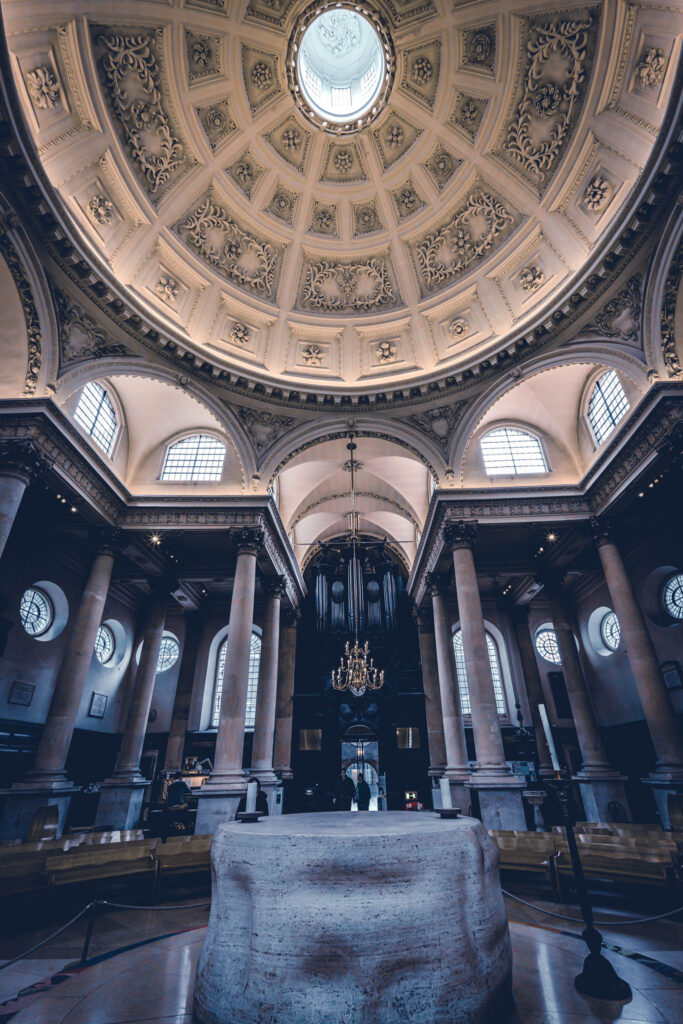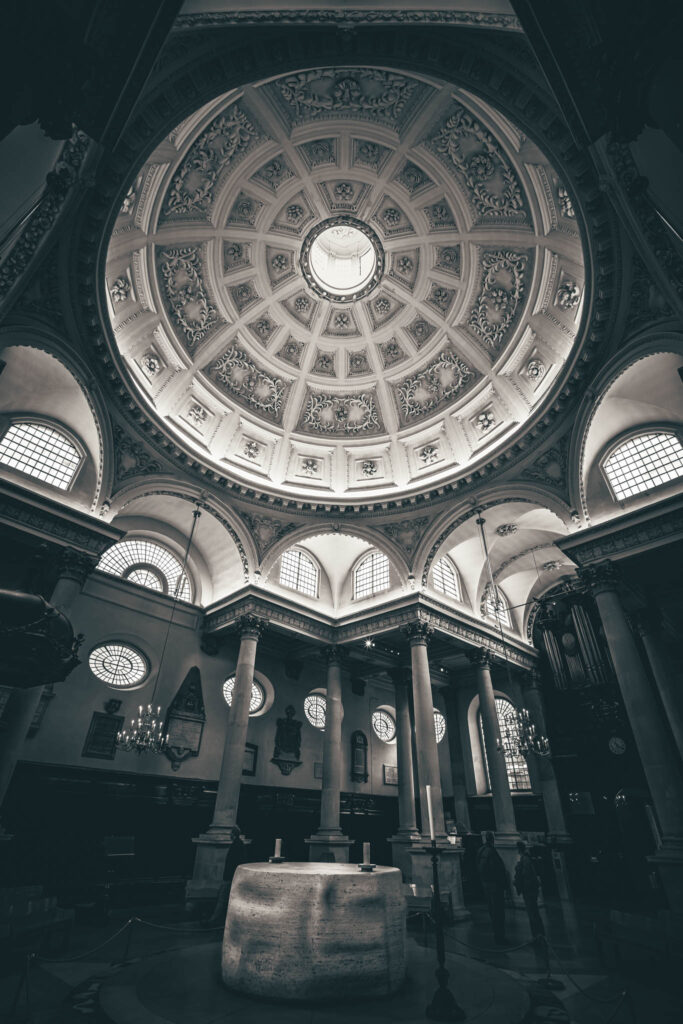



It’s down the street from the Mithraeum, along the course of the old and long hidden river that divided the Saxon city between Britons (Cornhill) and Saxons (Ludgate): St. Stephen Walbrook, Christopher Wren architect, 1679.
And it is a rare thing: an I-told-you-so last word in architectural form. I love it. This is Wren’s belated response to the critics of his “Great Model” scheme for St. Paul’s, which was a centralized Greek-cross plan and even more highly original than the existent cathedral’s design. But critics in the clergy intrigued against the Great Model (which after much effort and expense was abandoned in frustration by Wren by 1674) because they felt the central plan would conflict with liturgical requirements. Wren was a complete autodidact in architecture, he came up with an almost-unparalleled and genius response to the brief for his project, and a gaggle of rigid rubes shot it down…seems like a familiar tale, doesn’t it? Here, where he had more leeway, years later Wren seems to have thumbed his nose at the critics and designed a miniature version of his central-plan church that the standpatters couldn’t thwart.
In fact St. Stephen is even more centralized than Wren left it…the dead-middle amorphous altar is the 1983 work of the ubiquitous modernist sculptor Henry Moore, commissioned by Peter Palumbo (who had his own battles with architectural fuddy-duddies).



Leave a Reply